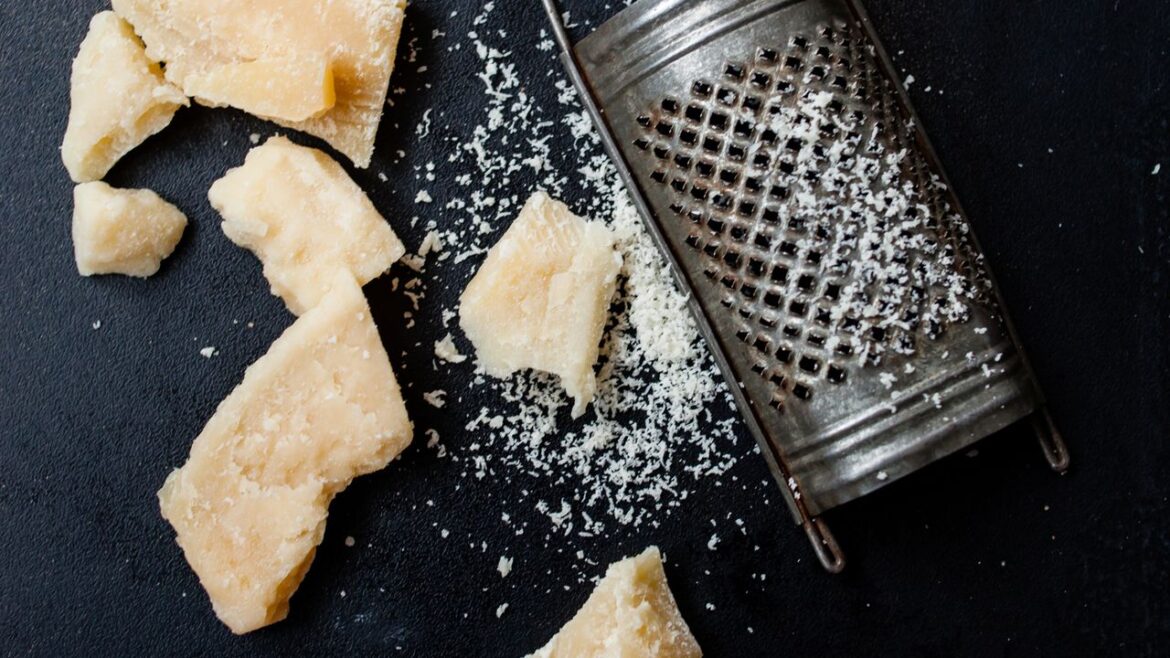“The rind you get with it is a bonus.”
Tuukka Koski food styling: Alison Attenborough, prop styling: kalen kaminski
text in callout
When you have found a reliable source of Parmigiano-Reggiano,
consider buying a substantial piece of it. If scrupulously
stored and refrigerated, it keeps quite well. I can
store it for many months before using it up. If the piece
you’ve bought is very large, split it in two or more parts.
Wrap it tightly in a layer of good cheesecloth. I buy mine
from the King Arthur Baker’s Catalogue. Over the cheesecloth,
wrap a sheet of special cheese paper, available from
Formaticum, or aluminum foil, fastening it tightly with
paper tape. Refrigerate it, enclosing it, if you wish, in a large
resealable plastic bag. Rewrap the cheese with a fresh piece
of cheesecloth every ten days. If white spots show on the
surface, they signal the presence of the amino acids that
contribute to the desirable graininess of the cheese. If a few
green moldy spots appear, simply scrape them off. If the
cheese is beginning to look chalky, it is drying. Replace the
cheesecloth with a freshly moistened piece, wrap the cheese
in it, wrap aluminum foil over it, and refrigerate overnight
to replenish the cheese’s moisture. The following day, rewrap
it, replacing the moist cheesecloth with a dry piece.
Do not buy grated cheese, nor have a store grate cheese
for you, nor grate it at home too long in advance of using it.
Once grated, it begins to lose moisture. A way of knowing
how an Italian restaurant uses Parmigiano is to ask if you
could have a chunk of the cheese to eat at table. It is possible
that they do not have any.
A crostino of Parmigiano is always a good idea.
Photo by Romulo Yanes
text in callout
Let me introduce you to the crostino of Parmigiano and
olive oil that my husband’s grandmother used to prepare
for him when he was a schoolboy in Bologna. Grill slices of
good, plain, crusty bread to a pale brown and lay them on
a tray. Blanket the bread with abundant freshly grated Parmigiano,
allowing an excess of cheese to drop onto the tray.
Pour enough olive oil over it to soak the cheese thoroughly,
not caring if some of the oil spills onto the tray. After eating
the crostino, use a slice or two of bread to wipe up the oil
and cheese from the tray. Your fingers will get sticky. Victor
used to lick his.
Excerpted from Ingredienti: Marcella’s Guide to the Market by Marcella Hazan and Victor Hazan. Copyright © 2016 by Marcella Hazan and Victor Hazan. Illustrations copyright © 2016 by Karin Krestchmann Lubart. Published by Scribner, a Division of Simon & Schuster, Inc. Reprinted with permission.


Dining and Cooking